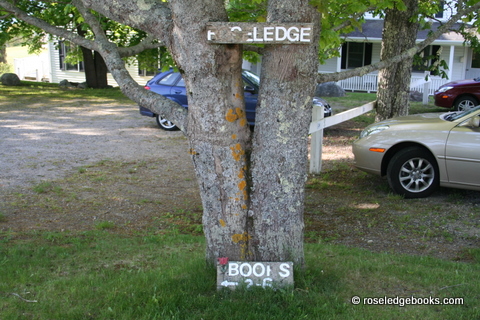Greetings from my less-new digs where today’s aerie (12th floor) view is one of soft fog resting on treetops and temperatures are so mild that the birds alit on the upper bush branches after eating their fill from Bob’s daily birdseed run. It’s the season of needing ocean highlights (I watch golf and await Pebble Beach), and finding Roseledge Books connections almost everywhere.
For instance, I noticed that John C. Malone, sometimes part of the greater Roseledge Books neighborhood, is buying 980,000 acres of Maine timberland. This is quite exciting. So just in case he wants a good read to be totally adventure-ready, RB, his neighborhood bookseller, is suggestion-ready.
The first most apt suggestion is Bernd Heinrich’s The Snoring Bird. My Family’s Journey through a Century of Biology because the author is virtually one with the woods, any woods maybe, but mostly in his life, the Maine woods. He lives in them, observes, studies, practically inhales them, and shares his woods-life with us. This is a great anticipation read; it gets you ready to see what is there.

Well, it's a tree for the occasion or a knees-down view of a decorous giant. See below for a better -- and the only other -- tree option. Otherwise, bushes rule.
Maybe equally apt, but more difficult to justify is Leanne Shapton’s rough-paper beauty, The Native Trees of Canada. Okay, the tree types are “of Canada,” but Maine timberlands abut Canada, and birds fly expansively and drop seedy dinners. Also this book is a many-aspect upper for a dreary day. So how about a tromp through the woods to identify which trees “of Canada” are “of Maine,” too? Then enjoy a winter fire with good books (from RB, of course) and find appreciations of the tree-types in the writings of the observant. (Ms. Shapton did this in her NYTBR back page essay, maybe October, 2010.) Okay, I admitted it was a stretch, but this little treasure is too good to pass up. Most recently, I took it with me to the yarn shop for color inspiration when getting ready to knit my next.
Top of my current pile of Roseledge Books possible is T.R. Reid’s Healing of America: Global Quest for Better, Cheaper, and Fairer Health Care, then Steven Johnson’s Where Good Ideas Come From: Natural History of Innovation (okay, I couldn’t wait and bought it in hardcover), Dan Brown’s The Lost Symbol, which I worry may be yet another iteration of Nicholas Cage’s hugely ho-hum National Treasure movies, and Lee Child’s 61 Hours, which I heard him say uses only the cold, not the terrain, of South Dakota as a story element. I am always ready for Jack Reacher, but cold-only SoDak may make this adventure less interesting than usual because I know Dakota cold well from a childhood of frolicking n the (clearly) harsher North Dakota version.
Amazingly, Lee Child gives me a segue into mentioning my latest must read: Richard Thompson’s Big Wheat: A Tale of Bindlestiffs and Blood. Don’t get too excited, but it is a murder mystery that takes place in 1919 in North Dakota.
More later.

